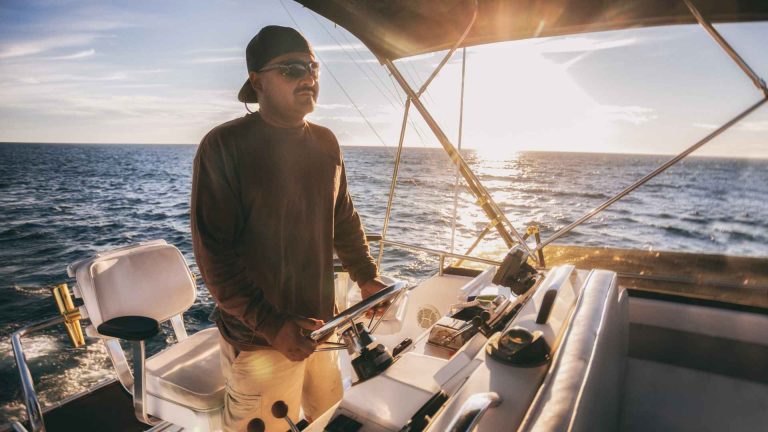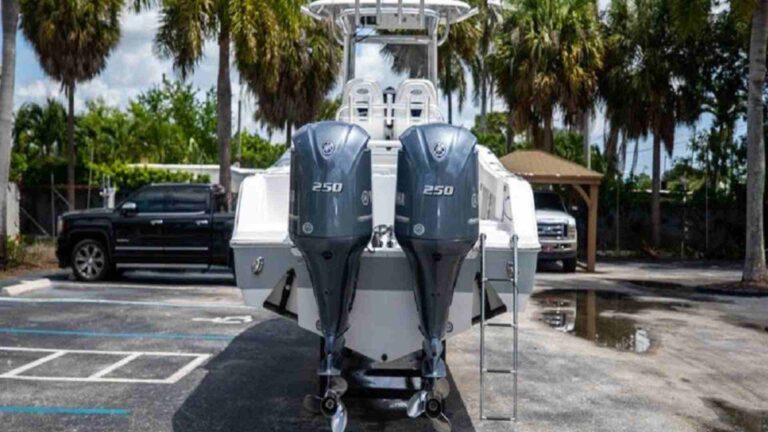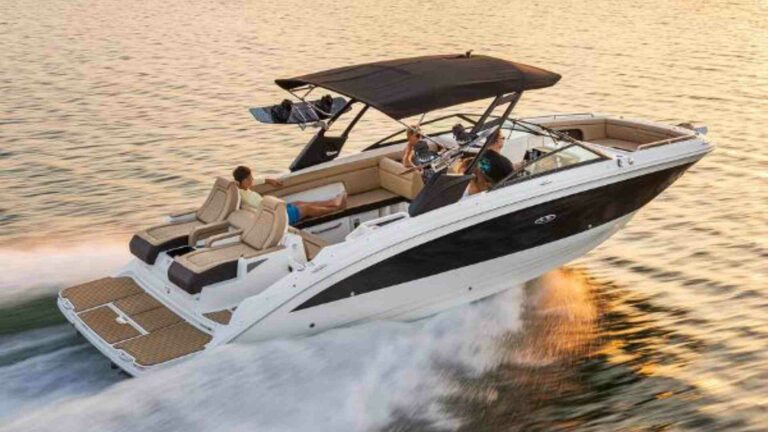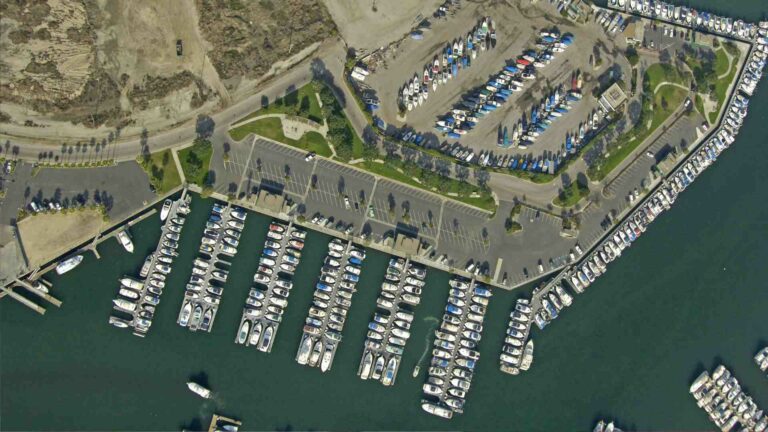Capsize Screening Formula for Boats and How to Measure It
Boating enthusiasts understand the thrill of being out on the water, but with adventure comes responsibility – especially when it comes to boat stability and safety. The concept of boat stability and the risk of capsize are crucial factors for anyone navigating water bodies. In this article, we’ll delve into a tool that holds the key to understanding and evaluating a boat’s stability: the capsize screening formula.
This formula is more than just a mathematical equation; it’s a powerful tool that provides essential insights into a boat’s potential for stability or vulnerability. As boaters, understanding the capsize screening formula and its components can greatly contribute to informed decision-making and safer voyages. Join us as we explore the depths of this formula, decode its components, and highlight its significance in ensuring enjoyable, secure boating experiences.
The Foundation of Boat Stability
When it comes to boating, stability forms the very foundation of a safe and enjoyable experience on the water. Stability refers to a boat’s capacity to maintain an upright position and resist tipping or capsizing, even in the face of challenging conditions. Understanding stability is essential because it directly impacts how a boat responds to waves, wind, and the movements of passengers onboard.
Stability isn’t just about comfort; it’s a critical factor in preventing capsizing – a situation where a boat overturns and potentially endangers passengers and crew. Ensuring a boat’s stability is paramount for maintaining control, avoiding accidents, and promoting confidence in boating endeavors. One powerful tool that aids in assessing a boat’s stability and potential capsize risk is the capsize screening formula. In the following sections, we’ll explore this formula’s components, how it works, and why it matters for safe boating practices.
Introducing the Capsize Screening Formula
The capsize screening formula is a mathematical equation designed to evaluate the potential risk of a boat capsizing under certain conditions. It’s a valuable tool that takes into account a range of factors related to a boat’s design and characteristics, all of which contribute to its overall stability on the water. By using this formula, boaters can gain insights into how susceptible a boat might be to capsizing, helping them make informed decisions about their waterborne activities.
The formula’s components include measurements of a boat’s beam (width), displacement (weight), and the vertical center of gravity. Additionally, the formula considers the boat’s form stability – how its shape influences stability – and the weight distribution of passengers, cargo, and other items on board. The capsize screening formula offers a standardized way to assess a boat’s stability potential, making it an invaluable asset for boating safety. In the upcoming sections, we’ll delve into the individual components of the formula and their significance.
Components of the Capsize Screening Formula
The capsize screening formula takes into account several key components that collectively influence a boat’s stability. Understanding these components is essential for comprehending how the formula assesses the risk of capsizing. Here’s a breakdown of the crucial elements:
- Beam (B): The beam refers to the width of the boat, measured from side to side. A wider beam generally contributes to greater initial stability by providing a wider base. However, extreme width can also lead to decreased stability if not balanced with other factors.
- Displacement (D): Displacement represents the weight of the boat, including its hull, equipment, passengers, and cargo. A heavier boat tends to be more stable because it resists tipping over, but excessive weight can compromise stability if not properly managed.
- Metacentric Height (GM): The metacentric height is a measurement of the boat’s stability relative to its center of gravity. It represents the vertical distance between the center of gravity (G) and the metacenter (M), which is the point where the buoyant force acts. A higher GM value contributes to greater stability, as the boat is more likely to return to an upright position after a disturbance.
The interaction of these components determines a boat’s overall stability. A wider beam, higher displacement, and sufficient metacentric height contribute positively to stability. However, a balance must be struck between these factors to ensure optimal stability without compromising other aspects of boat performance. The capsize screening formula evaluates these components to provide a quantitative measure of a boat’s vulnerability to capsizing.
How the Formula Works
The capsize screening formula is a straightforward mathematical equation that quantifies a boat’s susceptibility to capsizing based on its dimensions and characteristics. The formula is as follows:
Capsize Screening Formula: GM/B ≤ 2.0
Here’s how to interpret and apply the formula:
- Calculate Metacentric Height (GM): Subtract the center of gravity (G) height from the metacenter (M) height. This results in the metacentric height (GM), which represents the boat’s stability. A higher GM indicates better stability.
- Determine Beam (B): Measure the width of the boat, known as the beam (B), in feet.
- Calculate GM/B Ratio: Divide the calculated metacentric height (GM) by the beam (B) of the boat.
- Compare to 2.0: The resulting GM/B ratio is then compared to the value of 2.0. If GM/B is equal to or less than 2.0, the boat is considered stable within the parameters of the formula. If the ratio exceeds 2.0, the boat may have reduced stability and a higher risk of capsizing.
Interpreting the Result:
- GM/B ≤ 2.0: The boat is considered to have adequate stability based on the capsize screening formula.
- GM/B > 2.0: The boat may have reduced stability, and caution should be exercised, especially in adverse conditions.
It’s important to note that while the capsize screening formula provides a useful guideline, other factors such as hull design, weight distribution, and handling characteristics also influence a boat’s stability. Therefore, while the formula offers valuable insights, it’s not the sole determinant of a boat’s overall stability.
Capsize Screening Numbers

The capsize screening formula yields a numerical value known as the GM/B ratio, which serves as an indicator of a boat’s stability. Understanding the range of capsize screening numbers is essential for assessing a boat’s vulnerability to capsizing:
- GM/B ≤ 2.0: A boat with a GM/B ratio equal to or less than 2.0 is considered stable based on the capsize screening formula. This indicates that the boat’s metacentric height (GM) is adequately balanced in relation to its beam (B), contributing to its stability.
- GM/B > 2.0: If the GM/B ratio exceeds 2.0, the boat may have reduced stability, potentially leading to a higher risk of capsizing. A GM/B value above 2.0 suggests that the metacentric height (GM) is not as well-proportioned to the boat’s beam (B), which can negatively impact stability.
The significance of lower numbers indicating higher stability lies in the relationship between the metacentric height (GM) and the beam (B) of the boat. A smaller GM/B ratio suggests that the metacenter is located relatively higher above the center of gravity, promoting better stability by resisting tipping forces.
Boat designers and naval architects aim to achieve a balanced GM/B ratio that falls within the acceptable range for the boat’s intended use. However, it’s important to remember that while the capsize screening formula provides valuable insights, other factors such as hull shape, weight distribution, and handling characteristics also contribute to a boat’s overall stability.
Components of the Capsize Screening Formula
While the capsize screening formula provides a valuable tool for assessing stability, there are additional factors beyond the formula that can significantly influence a boat’s stability. These factors should be considered to ensure safe boating experiences:
- Weight Distribution: The distribution of weight within a boat plays a crucial role in its stability. Uneven weight distribution, especially in smaller boats, can lead to imbalances that affect stability. Properly distributing passengers, gear, and equipment according to manufacturer recommendations is essential.
- Loading: Overloading a boat with excessive weight can lower its stability and increase the risk of capsizing. Boats have maximum weight capacities specified by the manufacturer. Exceeding these limits can compromise stability and safety.
- Modifications: Alterations to a boat’s design, structure, or equipment can impact stability. Modifications should be made with careful consideration of their potential effects on weight distribution and overall balance. Unauthorized modifications can compromise the boat’s stability and structural integrity.
- Freeboard and Buoyancy: The freeboard—the distance between the waterline and the upper deck—plays a role in a boat’s ability to resist capsizing. Boats with lower freeboard may be more susceptible to swamping, reducing stability. The buoyancy of the hull design also influences stability and the boat’s ability to handle waves.
- Manufacturer Recommendations: Manufacturers provide guidelines for proper loading, weight distribution, and maximum capacities. Following these recommendations is crucial for maintaining the boat’s intended stability and safety.
- Weather and Water Conditions: External factors like wind, waves, and current can impact a boat’s stability. Larger waves and rough waters increase the likelihood of capsizing, particularly if the boat’s stability is already compromised.
- Skill and Experience: The operator’s skill and experience in handling the boat also play a role in maintaining stability. Proper boating techniques, such as adjusting speed in adverse conditions, can help mitigate stability risks.
Ultimately, a combination of factors contributes to a boat’s stability, and understanding how they interact is essential for safe boating. While the capsize screening formula provides a starting point, boaters should also be attentive to weight distribution, loading, modifications, and other relevant considerations to ensure optimal stability and minimize the risk of capsizing.
Significance of the Capsize Screening Formula for Boating Safety

The capsize screening formula holds immense significance in ensuring boating safety by providing boaters with a valuable tool to assess and understand a boat’s stability characteristics. Here’s why the formula matters for safe boating:
- Informed Boat Selection: When choosing a boat, understanding its stability is crucial. By calculating and comparing capsize screening numbers, boaters can make informed decisions that align with their intended use. Boats with lower capsize screening numbers are generally more stable, making them better suited for a variety of conditions.
- Matching Conditions: Different boating conditions require different levels of stability. Using the capsize screening formula allows boaters to match the boat’s stability with the conditions they plan to navigate, ensuring a safer and more comfortable experience.
- Awareness of Limits: Knowing a boat’s capsize screening number raises awareness of its stability limits. Boaters can avoid overloading the boat, staying within recommended weight capacities, and maintaining proper weight distribution to prevent stability issues.
- Safe Navigation: Understanding a boat’s stability characteristics enables boaters to navigate confidently in varying conditions. It helps them anticipate how the boat will respond to waves, wind, and maneuvers, reducing the risk of sudden instability and capsizing.
- Preventing Capsizing: The formula’s application aids in preventing capsizing incidents by identifying potential risks in advance. Boaters can take appropriate measures to mitigate stability concerns, such as adjusting loading, changing course, or slowing down.
- Education and Awareness: Learning about the capsize screening formula encourages boaters to deepen their understanding of boat stability principles. This increased awareness fosters responsible boating practices and encourages adherence to safe loading and operating procedures.
- Minimizing Accidents: By incorporating stability considerations into their boating plans, boaters can help minimize accidents, improve onboard safety, and protect both themselves and their passengers.
Incorporating the capsize screening formula into boating practices enhances safety and responsible seamanship. It empowers boaters to make well-informed decisions about boat selection, loading, and navigation, contributing to safer and more enjoyable experiences on the water.
Limitations of the Capsize Screening Formula
While the capsize screening formula serves as a valuable tool for assessing boat stability, it’s important to recognize its limitations. Boaters should be aware of these limitations and complement the formula’s insights with practical experience and prudent boating practices. Here are some key limitations to consider:
- Simplified Model: The capsize screening formula is a simplified mathematical model that doesn’t account for all the complex factors that influence a boat’s stability. Real-world conditions, such as wind, waves, and currents, can interact in ways that the formula doesn’t fully capture.
- Static Analysis: The formula provides a static analysis of stability based on a boat’s specifications at rest. It doesn’t consider dynamic factors like how the boat’s stability changes when underway, during turns, or when encountering waves.
- Weight Distribution: The formula assumes an even weight distribution across the boat’s length. In reality, uneven weight distribution, such as passengers moving around, can significantly impact stability.
- Experience Matters: While the formula is a helpful starting point, experienced boaters understand that stability is influenced by a combination of factors. Practical knowledge gained through time on the water is essential for reading conditions, making real-time adjustments, and responding to changing situations.
- Prudent Practices: Even if a boat’s capsize screening number indicates acceptable stability, boaters should still exercise caution and adhere to prudent practices. Avoid overloading the boat, maintain proper weight distribution, and adjust speed and course in response to changing conditions.
- Boater Skill: The formula doesn’t account for the skills and experience of the operator. A skilled boater who understands how to handle a boat in different conditions can enhance stability through proper maneuvering.
- Custom Boats: Custom modifications to a boat can alter its stability characteristics beyond what the formula predicts. Any modifications should be carefully considered, and their impact on stability should be understood.
While the capsize screening formula provides a valuable framework for assessing stability, it’s not a substitute for sound judgment, experience, and responsible boating practices. Boaters should use the formula as a starting point for understanding stability but also rely on their own expertise to make informed decisions on the water.
Resources and Calculators

For boaters interested in assessing their boat’s stability using the capsize screening formula, there are several online resources and calculators available that provide convenient tools for this purpose. These resources can help you quickly determine your boat’s capsize screening number and better understand its stability characteristics. Here are a few websites and tools to consider:
- Boat Stability Calculator: Various boating organizations and websites offer boat stability calculators that allow you to input your boat’s specifications, such as beam, displacement, and metacentric height. These calculators will then provide you with the capsize screening number and help you interpret its implications.
- Manufacturer Websites: Some boat manufacturers provide calculators or guidelines on their websites to help boaters assess their boat’s stability. These resources are often tailored to the specific models they offer.
- Boating Forums: Online boating communities and forums can be excellent sources of information. Fellow boaters may share their experiences, insights, and even tools they have used to calculate capsize screening numbers.
- Boating Safety Organizations: Organizations dedicated to boating safety often provide educational resources and tools related to boat stability. These resources can offer valuable insights into how to use the capsize screening formula effectively.
- Boat Design Software: Certain boat design software applications or programs include stability calculation features. These tools are particularly useful for boat designers, but they can also be used by boaters to assess the stability of existing boats.
When using online calculators and resources, be sure to input accurate and up-to-date information about your boat’s specifications. Remember that the capsize screening formula is a helpful starting point, but it’s not a substitute for careful consideration, boating experience, and responsible operation. Using these resources in conjunction with your own boating knowledge will contribute to a safer and more enjoyable boating experience.
Watch 12 things to check before going offshore | Video
What is the capsize screening formula?
The capsize screening formula is a mathematical equation used to assess a boat’s vulnerability to capsizing. It takes into account factors such as the boat’s beam (width), displacement (weight), and metacentric height (GM) to determine its stability characteristics.
How do I calculate the capsize screening number?
The formula is: Capsize Screening Number = Beam / (Displacement / 64)^(1/3). You can find the boat’s beam and displacement in its specifications. Plug these values into the formula to calculate the capsize screening number, which indicates the boat’s stability.
What do different capsize screening numbers mean?
Lower capsize screening numbers indicate higher stability. A lower number suggests that a boat is less likely to capsize. Higher numbers imply reduced stability, and boats with higher numbers might be less suitable for certain conditions.
Can I solely rely on the capsize screening number to assess a boat’s stability?
While the capsize screening formula is a useful tool, it doesn’t account for all real-world scenarios. Factors like weight distribution, loading, modifications, and sea conditions can influence a boat’s stability. It’s important to consider these factors along with the capsize screening number.
Where can I find resources to calculate the capsize screening number?
There are various online resources and calculators available on boating websites, manufacturer websites, boating forums, and even boat design software. These tools allow you to input your boat’s specifications to calculate the capsize screening number. However, remember that these tools provide a starting point, and prudent boating practices and experience are essential for safe navigation.
Conclusion

In conclusion, the capsize screening formula serves as a valuable tool in assessing a boat’s stability, offering insights into its vulnerability to capsizing. By considering factors such as beam, displacement, and metacentric height, boaters can gain a clearer understanding of their vessel’s stability characteristics. This knowledge aids in making informed decisions about boat selection and operation, ultimately contributing to a safer and more enjoyable boating experience.
While the formula provides essential insights, it’s important to remember its limitations. Real-world conditions, weight distribution, and other variables can influence stability beyond the formula’s scope. As boaters, relying on experience, prudent practices, and manufacturer guidelines is equally crucial.
By utilizing online calculators and resources, boaters can easily apply the capsize screening formula to their vessels and gain valuable insights into their stability profiles. With this knowledge in hand, boaters can navigate the waters with confidence, prioritizing safety and enhancing their enjoyment on every journey.
ShareCapsize Screening Formula for Boats and How to Measure It with your friends and Leave a comment below with your thoughts.
Read Mercury Outboard Temperature Sensor Location until we meet in the next article.






